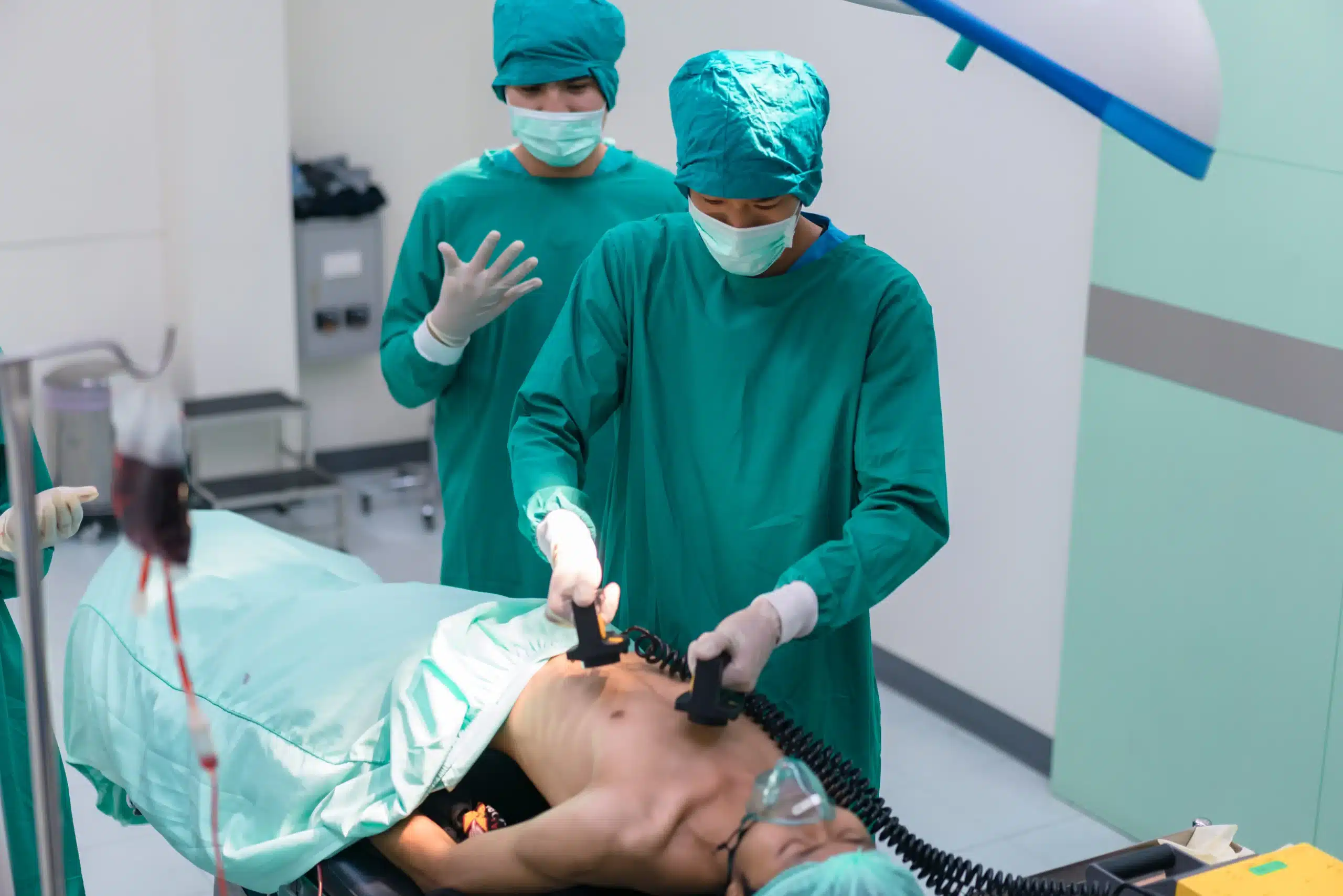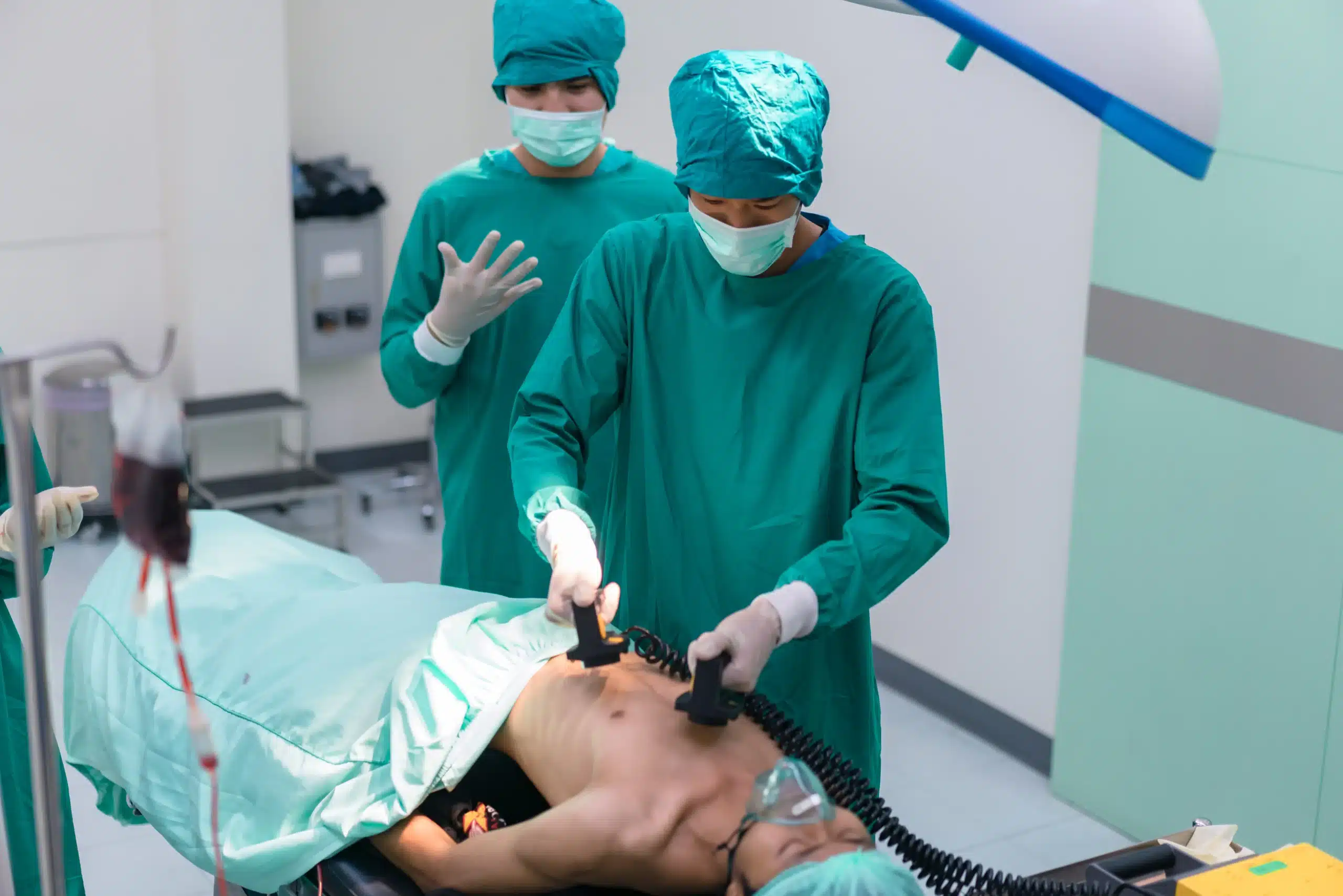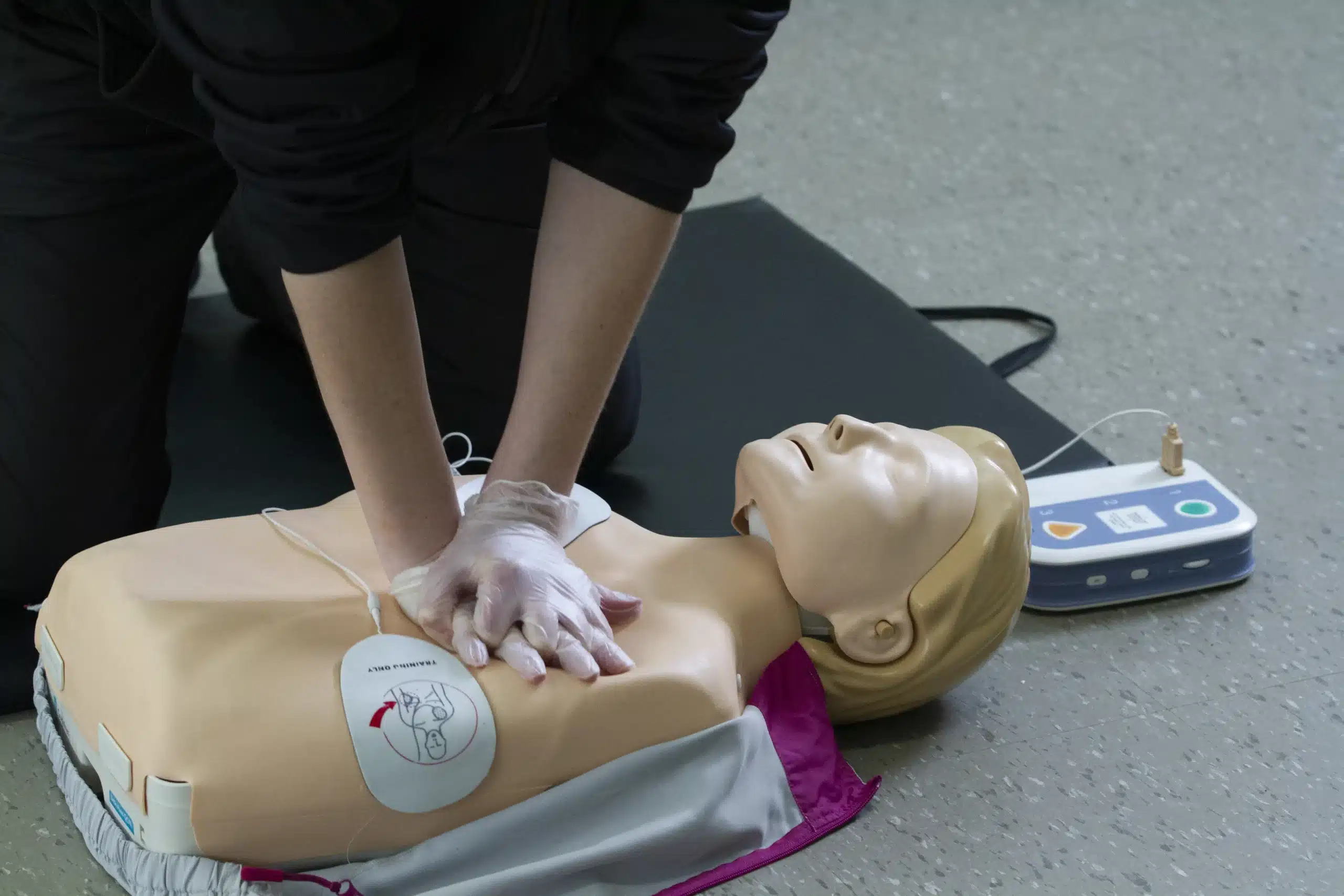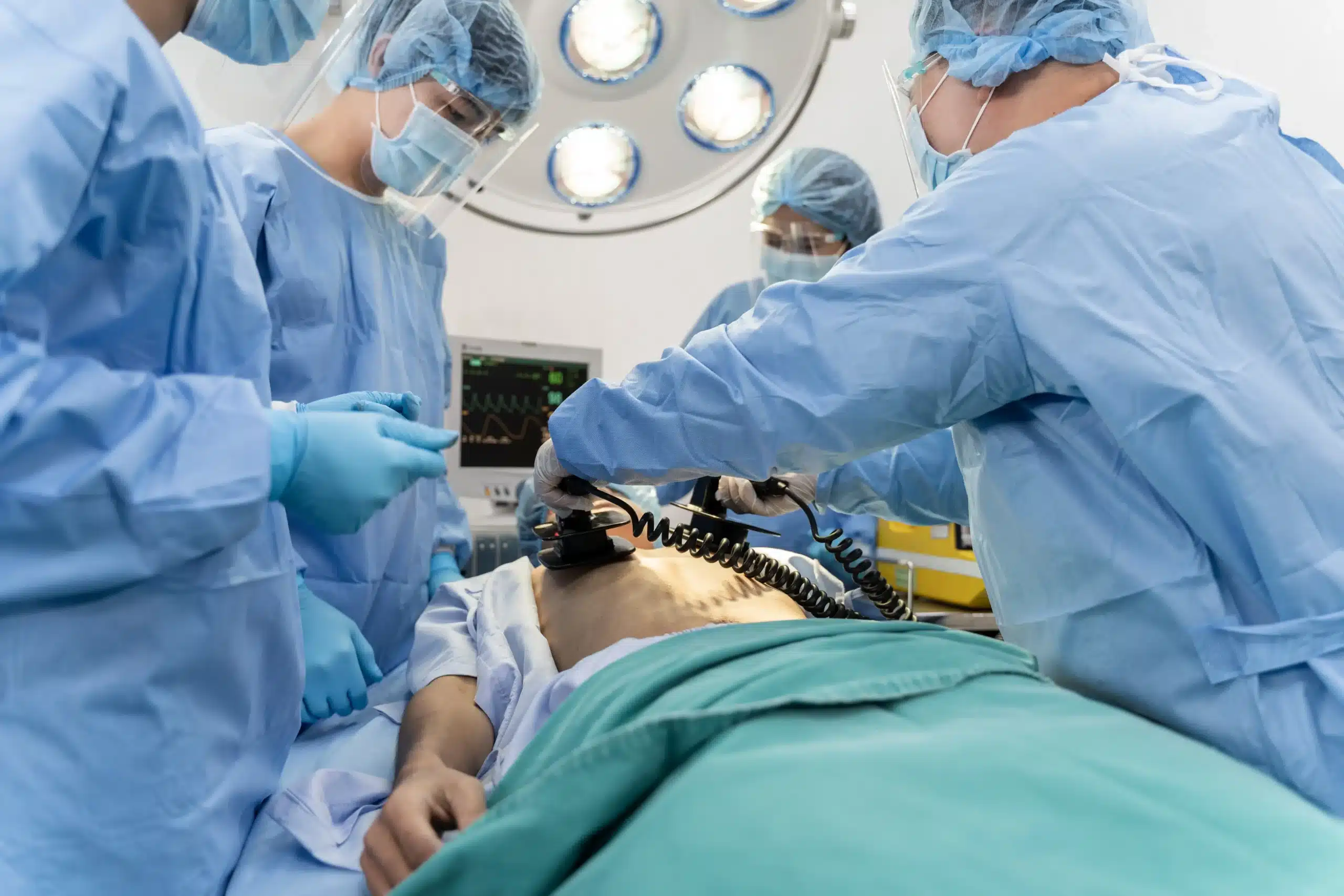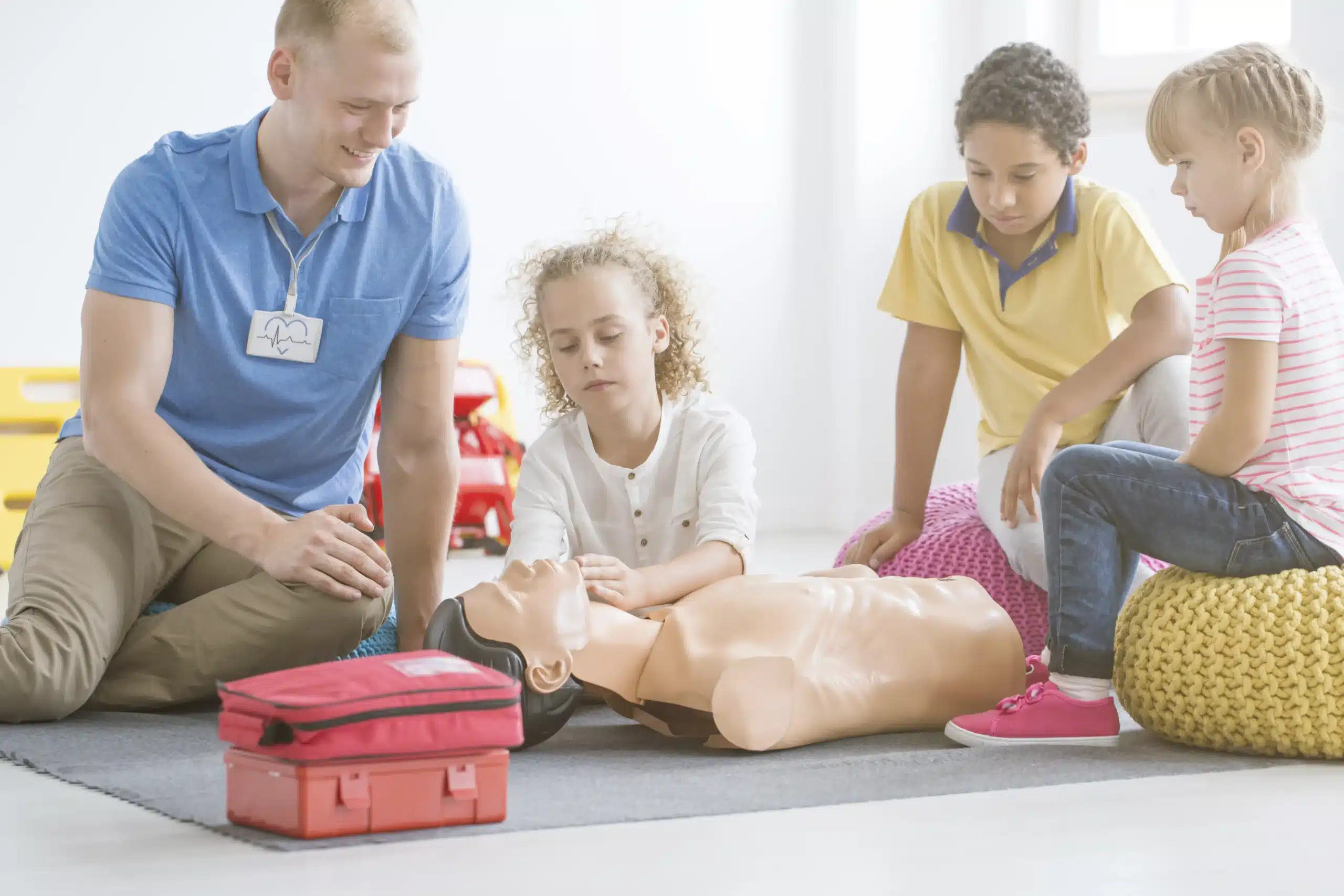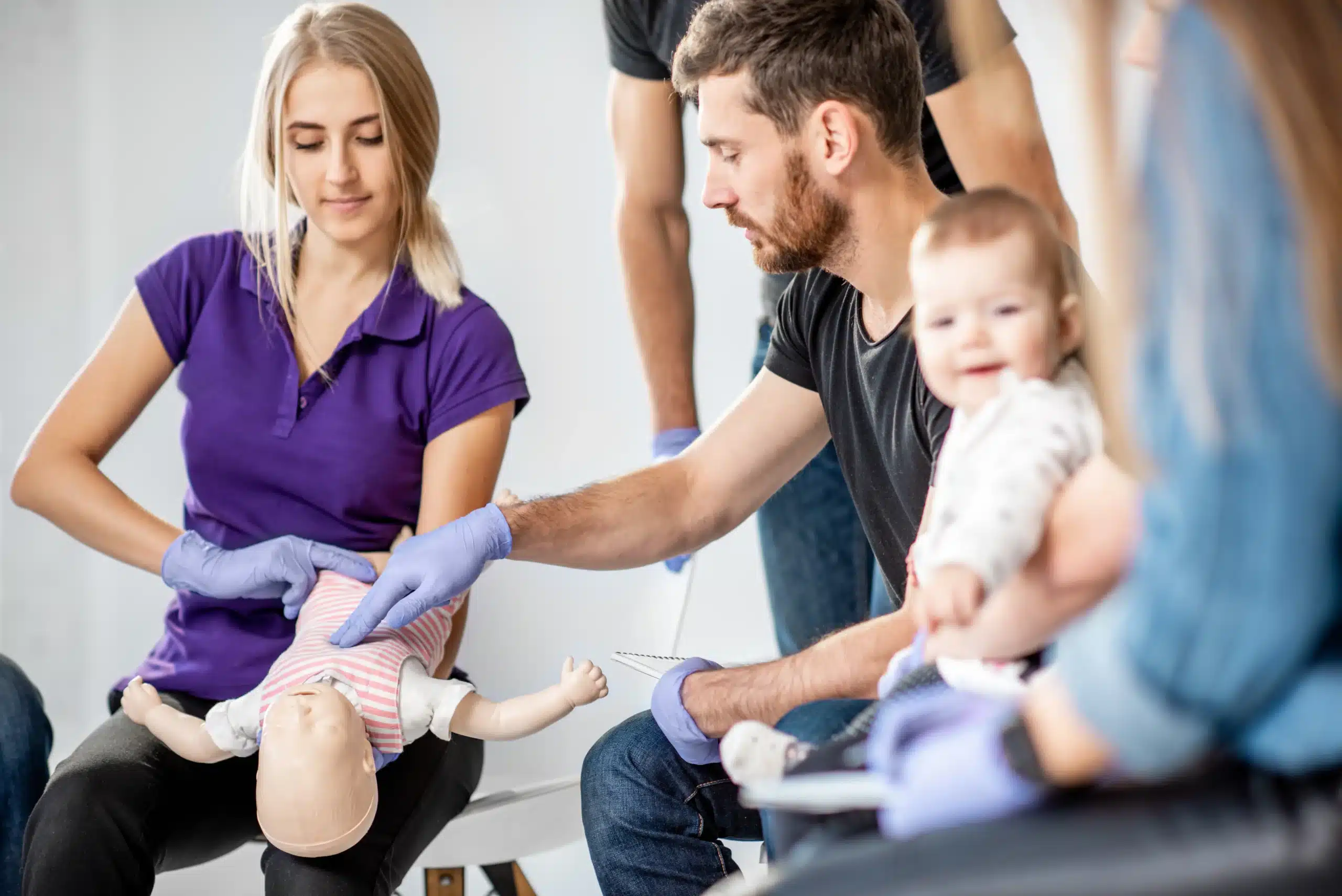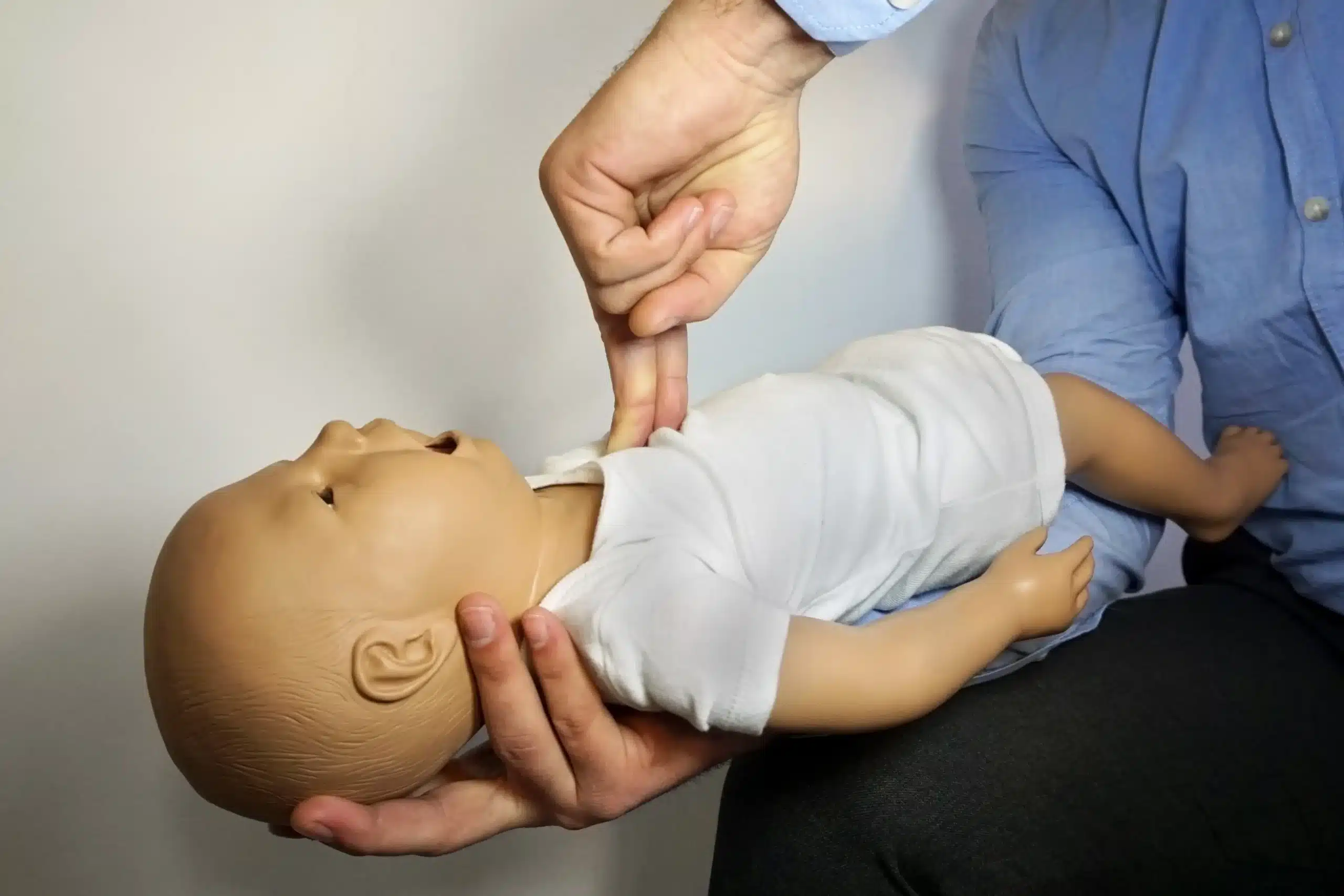Life is unpredictable. Accidents happen. But being equipped with first-aid knowledge can transform you from a bystander into a lifesaver. This guide is designed to help you find the right “first-aid classes near me,” whether you’re looking for basic first aid, CPR certification, or more specialized training. We’ll cover everything from finding reputable providers and understanding certification requirements to what to expect in a class and how to maintain your skills long after you’ve received your certificate.
Key Takeaways
- First aid skills are essential: Equipping yourself with first-aid knowledge enables you to handle various medical situations, from minor injuries to life-threatening emergencies, until professional help arrives. Choose a course that aligns with your individual needs and desired skill level.
- Find a reputable training provider: Look for certified instructors and organizations affiliated with recognized bodies like the American Heart Association or the American Red Cross. Consider factors such as course format, location, and schedule to find the best fit for your learning style and lifestyle.
- Maintain your skills and confidence: Regularly review and practice your first-aid techniques to stay prepared for emergencies. Seek continuing education opportunities to stay up-to-date with the latest guidelines and best practices, ensuring you can provide effective care when needed.
What are First-Aid Classes?
First-aid classes teach you how to handle medical emergencies until professional help arrives. These courses cover various situations, from minor cuts and burns to more serious incidents like choking or a heart attack. Learning first aid empowers you to respond quickly and effectively, potentially saving lives. It’s about providing immediate care, stabilizing the situation, and ensuring the best possible outcome before paramedics or other medical professionals arrive.
Types of First-Aid Training
Several types of first-aid training cater to different needs and skill levels. The American Red Cross, for example, offers a CPR, AED, and First Aid certification course covering adult, child, and infant care. Organizations like the American Heart Association also provide various courses, including basic first aid, advanced first aid, and specialized courses like wilderness or marine first aid. Some courses focus solely on CPR and AED training, while others incorporate it into a broader first-aid curriculum. San Ramon CPR Courses offers a variety of options, from basic life support to advanced certifications like ACLS and PALS.
Why First-Aid Skills Matter
First-aid skills are invaluable in everyday life. Knowing how to respond to an emergency can make a critical difference. For instance, understanding when to administer CPR versus other first-aid techniques is crucial, as explained in this article on the difference between CPR and first aid. CPR is specifically for someone unresponsive and not breathing normally. Equipping yourself with these skills through CPR and first-aid training prepares you for a wide range of situations, giving you the confidence to act quickly and potentially save a life. Whether at home, work, or in the community, first-aid knowledge can empower you to be a vital link in the chain of survival.
Find Reputable First-Aid Classes Near You
Finding the right first-aid class involves a bit of research to ensure you’re getting quality instruction and certification. These tips can help you find a reputable provider and the best class for your needs.
Search Online Effectively
Start by searching online. Use specific keywords like “first-aid certification near me” or “American Heart Association CPR classes” to narrow your results. Look for providers with user-friendly websites that clearly outline their courses, schedules, and pricing. Reading online reviews can offer insights into other students’ experiences, giving you a feel for the quality of instruction and the overall learning environment. Choosing the right provider is crucial for accurate and reliable training in these life-saving techniques. CPR Certification Now offers some helpful tips for selecting a quality first aid training provider.
Use Local Resources & Recommendations
Reach out to your local community for recommendations. Ask friends, family, or colleagues if they have taken any first-aid courses and can suggest reputable providers. You can also check with local hospitals, fire departments, or community centers, as they often offer first-aid and CPR training. Many providers, like San Ramon CPR Courses, also offer online registration for their AHA certification classes. This can make signing up and managing your training schedule much easier. For those in the San Ramon area, Dublin CPR Classes offers convenient options for AHA training.
Verify Provider Credentials
Before committing to a class, do your homework on the provider’s credentials. Ensure the instructors are certified and experienced in first aid and emergency response. Look for providers affiliated with recognized organizations like the American Heart Association or the American Red Cross. While a long list of certifications might look impressive, remember that some organizations, like the American Camp Association, offer a broad review rather than a specific endorsement. Confirming the legitimacy and relevance of a provider’s credentials will give you confidence in the quality of the training you’ll receive.
Choose the Right First-Aid Course
Picking the right first-aid course is like choosing the right tool for a job—you need the right fit. Think about what you’ll use your first-aid skills for, and let that guide your decision. We’ll break down the options to help you find the perfect match.
Basic vs. Advanced First Aid
Basic First Aid courses give you a foundation for handling everyday emergencies like minor cuts, burns, and sprains. You’ll learn essential skills like how to control bleeding and what to do if someone is choking. These courses are great for anyone who wants to feel prepared for common situations. Advanced First Aid training, on the other hand, goes deeper. It covers more complex medical emergencies and is designed for people who might face higher-risk situations or have more responsibility in an emergency, like healthcare providers or wilderness guides. Find a course that fits your needs.
Specialized Training Options
Beyond basic and advanced courses, you’ll find specialized first-aid training tailored to specific needs. For example, if you work with children, a course covering pediatric first aid would be invaluable. Some workplaces require specific certifications, like the Heartsaver® CPR and AED course, which is often preferred for those outside the healthcare field. Think about your job, hobbies, and lifestyle to see if any specialized training aligns with your needs. San Ramon CPR Courses offers a variety of options, including EMSA Child Care Health & Safety training.
Match Courses to Your Needs
Finding the right course isn’t just about the content—it’s also about the provider. Look for a reputable training center with qualified instructors who can deliver accurate and effective training. Reading reviews and checking credentials can give you confidence in your choice. Also, consider the format. Do you prefer in-person, hands-on learning, or would an online course be more convenient? Many training centers offer combined CPR and first-aid certification, which can be a great way to build a comprehensive skill set. San Ramon CPR Courses offers a low price guarantee and group discounts, making quality training accessible and affordable. Take the time to research and find a course that fits your schedule, budget, and learning style.
What to Expect in a First-Aid Class
So, you’ve signed up for a first-aid class—congratulations! Knowing what to expect can help you feel prepared and ready to learn these vital skills. Here’s a glimpse into a typical first-aid course:
Common Course Topics
First-aid courses cover a broad range of essential topics to equip you for various emergencies. You’ll learn how to assess a scene and prioritize care, including checking for responsiveness and breathing. The curriculum typically includes techniques for managing bleeding, burns, fractures, sprains, and other common injuries. You’ll also learn how to handle medical emergencies like choking, heart attacks, strokes, and allergic reactions. First-aid training programs often include specific protocols for addressing emergencies involving adults, children, and infants, ensuring you’re prepared for any situation. For specific details on what San Ramon CPR courses offer, visit our CPR and First-Aid Certification page.
Hands-On Practice
Hands-on practice is the cornerstone of effective first-aid training. In-person classes offer valuable opportunities to practice techniques like CPR, bandaging, and splinting under the guidance of a certified instructor. This interactive learning allows you to build muscle memory and gain confidence in your abilities. You’ll also have the chance to ask questions and learn from your classmates’ experiences. Check out our convenient group discounts for an even more engaging learning experience.
Class Duration & Structure
First-aid class structures and durations can vary depending on the provider and the level of certification. Many programs now incorporate blended learning, combining online modules with in-person skills sessions. This flexible approach lets you learn the theoretical material at your own pace online, then practice those skills in a real-world setting. A blended learning course might involve several hours of online coursework followed by a shorter in-person session to demonstrate your skills and receive your certification. San Ramon CPR Courses offers a variety of scheduling options to fit your busy lifestyle. Browse our RQI classes for flexible, high-quality instruction. We also offer a low price guarantee, so you can be confident you’re getting the best value for your training.
Certification & Accreditation
Knowing which certifications are accepted and how long they remain valid is key when selecting a first-aid course. This ensures your training meets industry standards and remains current.
Recognized Certifying Bodies
Several respected organizations offer first-aid certifications. The American Heart Association (AHA) is a leading provider of CPR and first-aid training. San Ramon CPR Courses is an AHA Training Center offering these essential certifications, along with other AHA courses like BLS, ACLS, and PALS. For those seeking childcare health and safety training, the Emergency Medical Services Authority (EMSA) offers specialized certification.
Validity & Renewal
Generally, first-aid certifications are valid for about two years. Check with your certifying body or training provider for the exact duration. San Ramon CPR Courses can provide details on their specific certification renewal policies. Renewal usually involves a refresher course to update your skills and knowledge of current first-aid practices. This ensures you’re always prepared to respond effectively in an emergency.
First-Aid Class Costs
Knowing the cost of first-aid training is an important part of planning your certification. Let’s break down the typical expenses and look at ways to save.
Average Prices
First-aid class costs vary depending on several factors. The type of certification, your location, and the training provider all play a role. Basic first-aid classes, which often include CPR training, typically range from $15 to $140. A basic CPR class with AED training usually falls between $15 and $55. A combined CPR/first-aid course will likely cost between $60 and $140. More advanced certifications, such as those designed for healthcare providers, can range from $60 to $300, depending on the specific requirements. For more detailed information on CPR class costs, check out resources like Lessons.com.
Discounts & Promotions
Many training providers offer discounts and promotions to make their courses more accessible. Keep an eye out for seasonal discounts or special rates for students, military personnel, or first responders. Online first-aid courses sometimes have lower price points than in-person classes. Some providers, including My CPR Certification Online, offer online training starting as low as $19.99.
Group Rates & Packages
If you’re training a team or group, ask about group discounts. Many providers offer reduced rates for group classes, which can be a smart option for businesses or community groups. These group rates can range from $35 to $45 per person for in-person sessions, as outlined by CPR Certification Virginia Beach. Some providers also offer package deals that combine multiple courses or certifications at a lower overall cost—a convenient way to get comprehensive training. For local options, San Ramon CPR Courses offers group discounts.
Online vs. In-Person First-Aid Classes
Choosing between online and in-person first-aid training depends on your learning style, schedule, and preferences. Both options offer valuable skills, but understanding the differences can help you make the best choice for your needs.
Pros & Cons of Each
In-Person First-Aid Classes
- Pros: In-person training provides hands-on learning with a certified instructor. You can ask questions in real-time, practice skills with classmates, and receive immediate feedback. This direct interaction often leads to a deeper understanding of the material and builds confidence. In-person classes also cover a wide range of scenarios, including treatment for adults, children, and infants, ensuring comprehensive training. The Red Cross highlights this comprehensive approach in their course descriptions.
- Cons: In-person classes require a greater time commitment, as you need to travel to a specific location and attend the entire session. Finding a class that fits your schedule might be challenging.
Online First-Aid Classes
- Pros: Online classes offer flexibility and convenience. You can learn at your own pace, fitting the training around your busy schedule. This self-paced format allows you to review material as needed and focus on areas where you need more practice. The Red Cross also offers online resources, including a Refresher Center, to help maintain your CPR skills.
- Cons: The lack of hands-on practice and face-to-face interaction can be a drawback. While online courses may cover the same material, the absence of a physical instructor can make it harder to ask specific questions or get personalized guidance.
Hybrid Learning
Hybrid learning combines the best of both worlds, offering a blended approach that incorporates online coursework with in-person skills sessions. You can complete the theoretical portion online at your own pace and then attend a shorter in-person session to practice skills and receive feedback from an instructor. The University of Nebraska Omaha offers hybrid CPR/AED/First Aid classes that follow this model. Many training centers, including San Ramon CPR Courses, provide American Heart Association (AHA)-certified courses using this hybrid approach. This offers flexibility while still ensuring you gain practical, hands-on experience.
Popular First-Aid Class Providers
Finding the right first-aid class often means choosing a reputable provider. Several well-known organizations offer standardized training programs. Here are a few popular options to consider:
American Red Cross
The American Red Cross is a trusted name in first-aid and CPR training. They offer a variety of courses, from basic first aid to advanced life support, catering to different learning styles and schedules. Their widespread network makes finding a class near you relatively easy.
American Heart Association
The American Heart Association (AHA) also provides a range of first-aid and CPR certifications. Many training centers and healthcare providers offer AHA-certified courses, often with online registration for added convenience. Look for providers in your area offering AHA certification if this is your preferred credential.
National Safety Council
The National Safety Council focuses on workplace safety and offers first-aid training programs designed for various industries. Their courses often emphasize preventing injuries and responding to emergencies in specific work environments. If your workplace requires first-aid certification, the National Safety Council might be a good fit.
St. John Ambulance
While primarily operating in the United Kingdom, St. John Ambulance is a respected international provider of first-aid training. They offer various courses, including options for community members and workplace-specific training. If you’re located outside the US, St. John Ambulance is a valuable resource.
Local Fire Departments & Hospitals
Don’t overlook your local resources! Fire departments and hospitals often offer free or low-cost CPR and first-aid classes to the community. Check their websites or give them a call to find out about upcoming training sessions. This can be a budget-friendly way to gain essential life-saving skills.
San Ramon CPR Courses
For those in the San Ramon, Dublin, or Danville areas of California, San Ramon CPR Courses provides AHA-certified training in CPR, first aid, and other life support courses. They focus on affordability and convenience, with classes held at Bishop Ranch 1 and certification cards issued upon completion. Check out their website for course schedules and information on group discounts.
Prepare for Your First-Aid Class
So, you’ve signed up for a first-aid class—fantastic! Taking a first-aid course is a rewarding experience, and being prepared will make it even better. Here’s what you should know before you go:
Required Materials
Most first-aid courses provide all the necessary materials for hands-on practice during class. This typically includes items like bandages, dressings, antiseptic wipes, and gloves. You won’t need to bring your own supplies. For example, the American Red Cross often provides all the necessary materials during their in-person skills sessions, as highlighted on their Omaha, Nebraska training page. Similarly, the University of Nebraska Omaha Wellness Center provides all materials for their CPR/AED/First Aid classes. Double-check with your chosen provider to confirm their policy, but chances are, you can just show up ready to learn.
Pre-Course Study Tips
While pre-course studying isn’t usually required for basic first-aid certification, a little prep work can help you get the most out of your class. First, consider your learning style. Do you thrive in a traditional classroom setting, or do you prefer learning at your own pace online? Many organizations, including the Red Cross, offer various course formats, such as in-person, online, and blended learning (a mix of both). Choosing the right format can make a big difference in how effectively you absorb the information. If you’ve taken a first-aid course before, brushing up on your skills beforehand can be helpful. The Red Cross also offers a Refresher Center to help you maintain your knowledge. Finally, before your class, confirm the schedule and location with your provider to avoid any last-minute surprises.
Use First-Aid Skills After Certification
Getting certified is a fantastic first step. Now, let’s talk about how to keep those skills sharp and your confidence high, so you’re truly prepared for anything.
Stay Confident & Ready
Think back to your first-aid class. Hopefully, it was a positive and encouraging experience where you felt comfortable asking questions and practicing your skills. This type of learning environment is crucial for building the confidence you’ll need to use those skills in a real emergency. Positive feedback and constructive instruction from your instructor can empower you to stay calm and take charge when it matters most. Remember, staying confident under pressure is just as important as knowing the techniques themselves. Regularly review the material and consider practicing key skills like CPR and bandaging with friends or family to maintain muscle memory and a sense of preparedness.
Continuing Education
First aid isn’t a “one and done” deal. Medical guidelines and best practices can change, so staying up-to-date is key. Look for opportunities to refresh your skills and knowledge through continuing education courses, workshops, or online resources. This ongoing learning will not only enhance your skillset but also reinforce your confidence and ensure you’re providing the most effective care possible. Think of it like any other important skill – regular practice and continued learning are essential for staying sharp and ready to respond effectively in any situation. Explore resources like the American Heart Association or your local Red Cross chapter for continuing education options. They often offer refresher courses and updated information on first-aid procedures. By staying committed to ongoing learning, you’ll be best equipped to handle emergencies and provide assistance when it’s needed most.
Related Articles
- CPR & First-Aid Training in Dublin: A Complete Guide – San Ramon CPR Classes
- CPR & First-Aid Training in Danville: Your Complete Guide – San Ramon CPR Classes
- Basic Life Support (BLS) in San Ramon: A Practical Guide – San Ramon CPR Classes
- Why Workplace CPR & First-Aid Training is Non-Negotiable
- Online CPR Classes Dublin: Your Complete Guide – San Ramon CPR Classes
Frequently Asked Questions
What’s the difference between basic and advanced first aid? Basic first aid covers common injuries like cuts, burns, and sprains, providing essential skills for everyday emergencies. Advanced first aid delves into more complex situations and is often geared towards healthcare providers or those in high-risk environments. It builds upon the basics, equipping you to handle more critical situations.
How do I choose the right first-aid course for me? Consider your current skills, personal or professional needs, and learning preferences. If you’re unsure, start with a basic first-aid course and then explore more specialized training based on your experience and goals. Think about where you’ll likely use these skills – at home, in the workplace, or outdoors – to guide your decision.
What can I expect during a typical first-aid class? Expect a mix of instruction and hands-on practice. You’ll learn essential skills like CPR, bandaging wounds, and managing various medical emergencies. Most classes involve interactive scenarios and demonstrations to help you build confidence and prepare for real-life situations.
How long is a first-aid certification valid, and how do I renew it? Certifications typically last around two years, although this can vary. Check with your certifying organization or training provider for their specific renewal process. Renewal usually involves a refresher course to update your skills and ensure you’re current on the latest guidelines.
Are online first-aid courses as effective as in-person classes? Both online and in-person courses have their advantages. Online classes offer flexibility, while in-person training provides hands-on practice and direct interaction with an instructor. A hybrid approach, combining online learning with in-person skills sessions, can offer the best of both worlds. Consider your learning style and preferences when making your choice.
